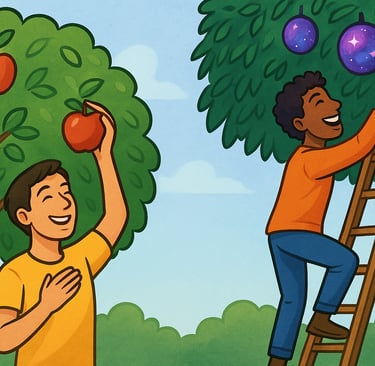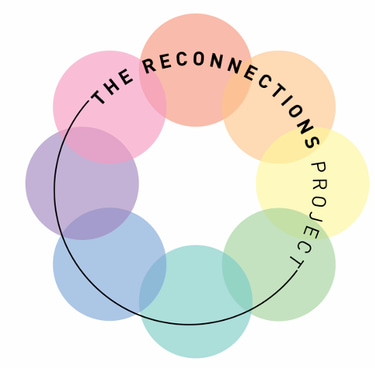Stop reaching for the low-hanging fruit
Targeted, strategic approaches are more likely to be effective than initiatives that don't know their target audience.
EFFECTIVE CAMPAIGNSIMPACT
Dr. Trent Grassian
8/20/20243 min read
A generic campaign is unlikely to be the most effective approach. People have a variety of different reasons that they choose to participate in a campaign, including various motives, habits, and barriers. However, non-profits and campaigners often aim to reach as many people as possible.
A great example of this is campaigns promoting dietary change, such as meat reduction, vegetarianism, or veganism. While there are some excellent, targeted campaigns out there, there are others that discuss a wide range of potential motives and provide some recipes and information about where to find vegan foods. While this can be helpful, it is unlikely to be the most helpful.
For my PhD, I researched seven UK-based reduction and vegan campaigns. This included analysing each campaign's content and interviewing their staff members. For the most part, I found that campaigns were designed to reach as many people as possible. While in the past, when there were few campaigns promoting reduction or veganism, this may have made sense, reduction and abstention are on the rise and I am concerned we may have reached much of the “low-hanging fruit.” It may be time to think more strategically: we may need to travel a bit further, maybe even use some ladders or other tools to try and reach new groups of people. But first, we need to survey the area: who is out there and how can we help them move toward a vegan diet?
In the modern world, we need to get people the information they want/need quickly. We all do it: we skim, we scroll through, we click off a site within a matter of seconds. So we need to get people’s attention and keep it long enough for them to get the right information. And different people are likely to be drawn in by different types of information and, importantly, they are likely to need different types of information to be able to maintain (and increase) changes in their dietary habits.
Here are some things that emerged as particularly important in my research:
Cooking: The willingness, ability, and motivation to cook emerged as incredibly important. If people have kids, dependents, or partners to feed, particularly if some of them eat meat, this can really make things difficult for a new reducer, vegetarian, or vegan. In addition, having the skills to cook vegan food varied dramatically between vegans and everyone else. This seems like an area where more attention is needed. Some people are doing amazing work in this area, such as LifeAfterHummus Community Benefit Society in London.
Resources: Some people have more money. Some people have more time. Some people have access to more vegan foods because they live in the middle of London or New York City, while other people live in rural areas (rural vs. urban being another key distinction). These things matter and, importantly, not recognising this may make our campaigns seem inaccessible to many communities, including low income individuals.
Being a “Foodie”: Not everyone likes trying new foods. Some people really want to eat the same three meals every day for the rest of their lives, or so it seems. Whatever way people like to eat, whatever their habits, we need to support them in transitioning in a way that feels as unscary as possible. If someone thinks they are going to have to try all kinds of “strange” foods they can’t pronounce, they may think veganism is not for them.
Social Environment: Having access to other people eating similarly is important. For those living in rural settings, in particular, it may be more difficult to find other people eating less / no meat or animal products. It is important to not only help people find others on a similar journey — which could be through social media — but to help them deal with all the negativity they are likely to encounter from omnivorous friends and family.
These are just a few examples of ways that campaigns need to think strategically. Someone who relies on mainly prepared meals is likely to need very different information than someone who is excited about trying to make vegan fish out of banana blossoms. Others may have a network of people who are already vegetarian or vegan or interested in becoming vegan in the future.
Most importantly, we need to be clear about who our target audience is and what information they need. This way, we can have different types of campaigns for a variety of groups and stop simply reaching for the “low-hanging fruit.”
You can find out more about this research in the full report: Meat Reduction and Vegan Promotion.


